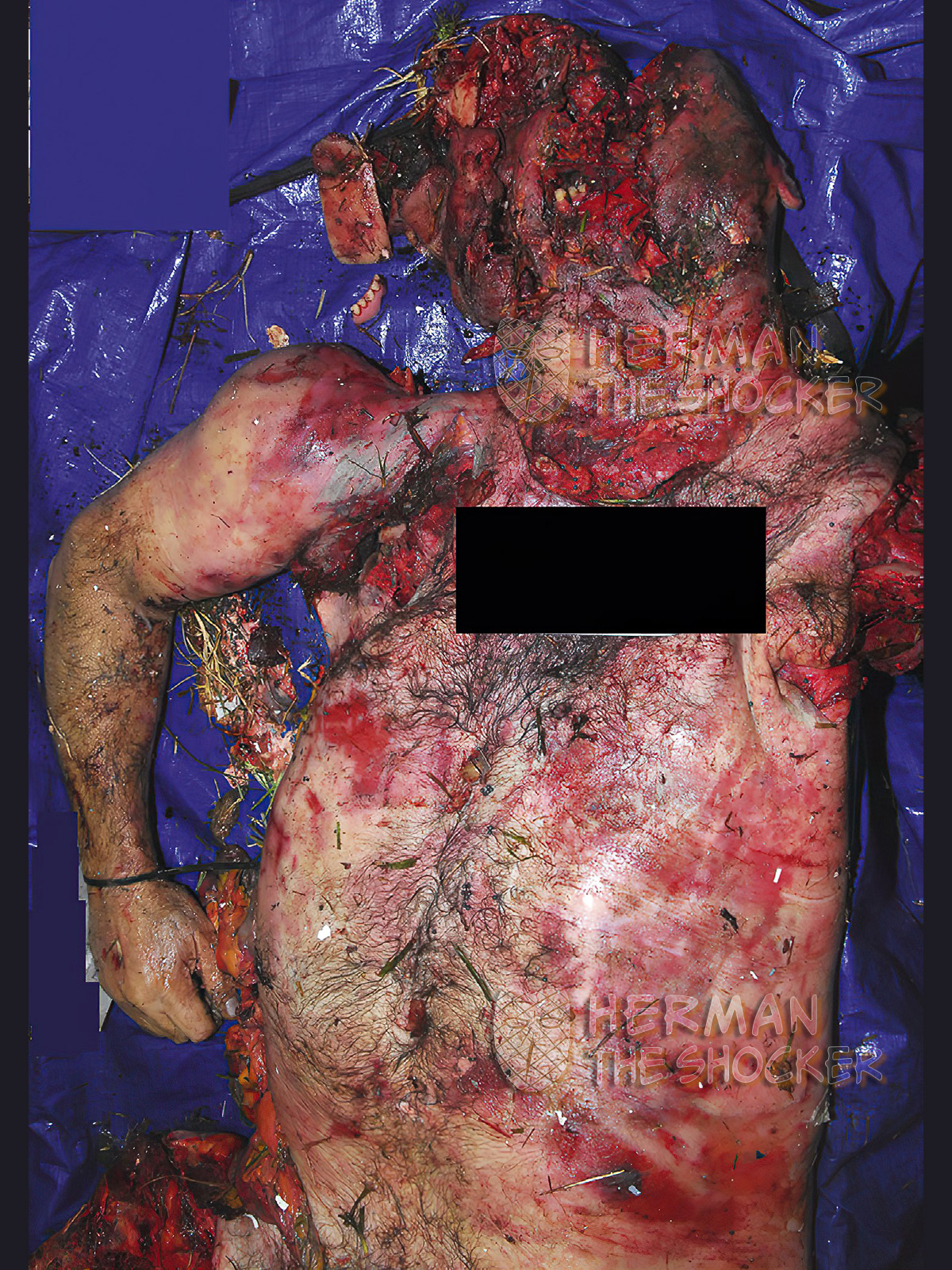Two persons were flying in a gyrocopter when deteriorating weather conditions resulted in the gyrocopter crashing. A middle-aged male pilot and an elderly male passenger died from multiple injuries sustained in the accident.
The pilot had extensive trauma to the head, torso, and both upper and lower limbs with multiple compound comminuted fractures (Figs.1-2).
Similarly, the passenger showed extensive trauma to the head with multiple lacerations and abrasions to the face and compound fracturing of the skull. There were multiple abrasions and lacerations with exposure of thoracic viscera in the region of the left axilla and over the sternum in the midline. There were multiple abrasions and lacerations with extrusion of abdominal viscera from the left lateral abdominal wall. There were multiple lacerations and abrasions on the left and right arms. There was compound fracturing of the distal left humerus and a closed fracture of the right humerus and compound fracture-dislocation of the right wrist. There were multiple abrasions and lacerations with compound fracturing of the left and right femora, tibiae, fibulae, and bones of both feet (Figs.3-4).
Fig.3 Anterior view of the passenger’s head and chest showing multiple lacerations, abrasions, and compound fracturing of the skull and multiple abrasions and lacerations with exposure of thoracic viscera in the region of the left axilla and over the sternum in the midline and a large laceration on the left abdomen associated with extrusion of abdominal viscera from the left lateral abdominal wall.
The extensive nature of the cranial and post-cranial trauma in both the pilot and the passenger is indicative of a high-force impact of a powered vehicle without a protective cabin. The pattern of skeletal injury is typical of impact involving an extreme amount of decelerative force directed along the axial skeleton. Postmortem CT images showed extensive bone disruption of both the pilot (Figs.6-8) and the passenger (Figs.9-11), with slightly more marked destruction of the skeleton of the pilot.
Latest posts


















